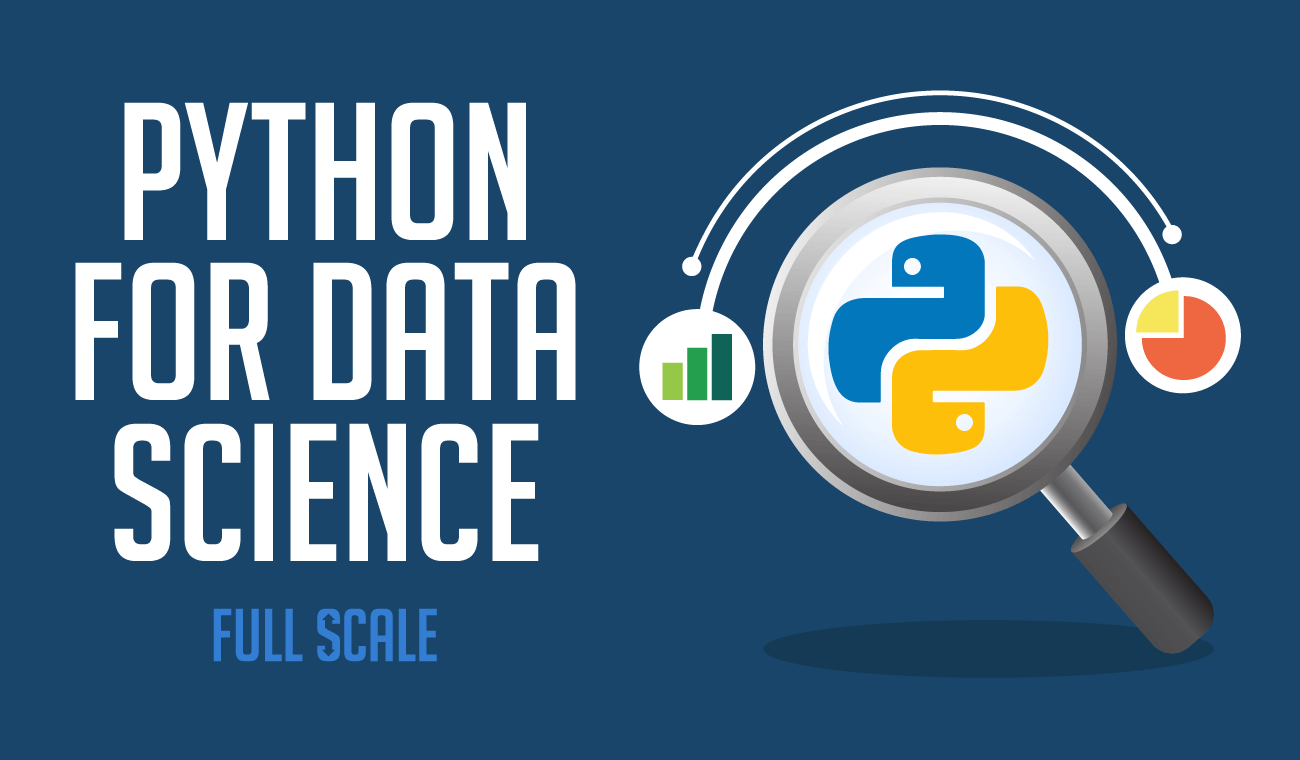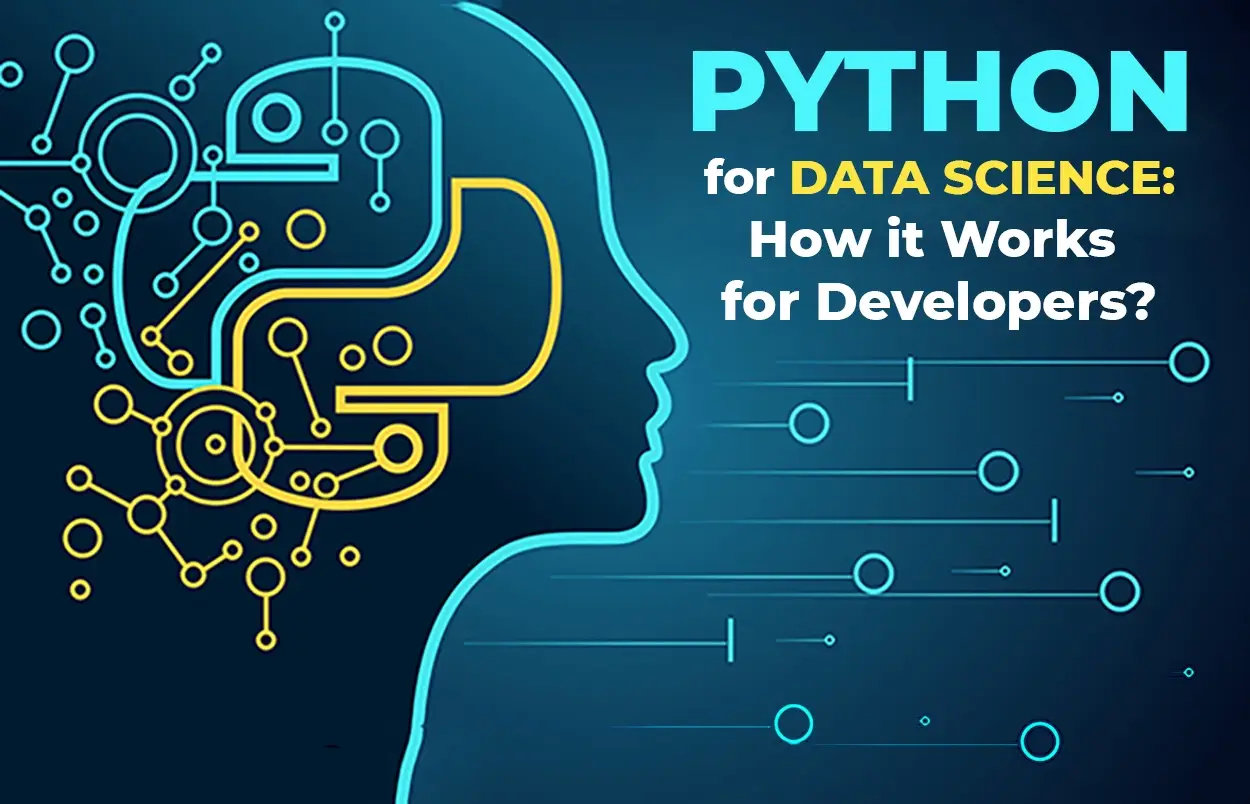Role Of Python In Data Science: A Comprehensive Overview
Data science is a domain that deals with the collection, analysis and interpretation of data, specifically for business purposes. It involves statistics, machine learning, artificial intelligence and database systems techniques altogether. Python is one of the most popular programming languages used in data science owing to its simplicity and flexibility. In this blog lets us discuss the Role of Python in Data Science with its various types of libraries, applications, etc.
It is an interpreted high-level programming language that was created by Guido Van Rossum in 1991 at CWI (Centrum Wiskunde & Informatica), Netherlands, as an alternative to Perl and Ruby on Rails which were already popular at that time but had some limitations like lack of OOP support or slow execution speed due to interpreter nature of both languages respectively.
Python Libraries For Data Science
It is a programming language that Guido van Rossum developed in 1989. It is used for general-purpose programming, but it has also become popular in the field of Data Science because of its ease of use and flexibility.
Python libraries are tools that extend the functionality of Python and make it easier to perform specific tasks such as data manipulation or machine learning. Several libraries are available for Data Science tasks, such as Numpy, Pandas, SciPy etc., which we will discuss later in this article, along with Python Libraries and their applications in various fields like Machine Learning & Deep Learning etc.
Role Of Python In Data Science For Data Analysis And Visualization
Data analysis and visualization are essential aspects of Data Science at the present time. Presently, Python has several libraries that make it easy to analyze and visualize data. Here are some of the most commonly used libraries for data analysis and visualization in Python:

Exploring Datasets
Exploring datasets is an essential step in data analysis. Python’s Pandas library provided that tools for reading and writing data in various formats, such as CSV, Excel, and SQL databases. It is particularly useful for working with tabular data, such as data in spreadsheets or databases. Pandas also provide powerful tools for data exploration, cleaning, and preparation.
Data Cleaning And Preprocessing
Data cleaning and preprocessing are critical steps in data analysis. Python’s Pandas library provided that data cleaning and preprocessing tools, such as removing duplicates, dealing with missing values, and transforming data. Pandas also provides powerful tools for data transformation, such as pivoting, merging, and reshaping data.
Data Wrangling And Manipulation
Data wrangling and manipulation are essential steps in data analysis. Python’s NumPy library provided that tools for working with arrays, such as indexing, slicing, and reshaping arrays. NumPy also provides tools for mathematical operations on arrays, such as addition, subtraction, multiplication, and division. Python’s Pandas library provides tools for data manipulation, such as selecting, filtering, and aggregating data.
Generating Statistical Reports
Generating statistical reports is a critical step in data analysis. Python’s SciPy library provided that tools for statistical analysis, such as hypothesis testing, regression analysis, and cluster analysis. Python’s Matplotlib library provides tools for data visualization, such as line charts, scatter plots, bar charts, and histograms. Matplotlib is particularly useful for creating high-quality visualizations for scientific publications and reports.
Graphical Representations
Graphical representations are essential for data visualization presently. Python’s Seaborn library provides tools for creating statistical graphics, such as heatmaps, pair plots, and facet grids. Seaborn is particularly useful for creating complex visualizations with multiple variables. Python’s Plotly library provides tools for creating interactive visualizations, such as scatter plots, line charts, and bar charts. Plotly is particularly useful for creating web-based visualizations that can be shared with others.
Python For AI & Machine Learning
Machine learning is a subfield of computer science and that deals with the design and development of algorithms that can learn from data. These algorithms such as are used for prediction, classification and clustering.
Machine learning has many applications in data science, such as natural language processing, image recognition, speech recognition etc., In this article, we will focus on how Python can be used for machine learning purposes.
To start off with, let’s understand what exactly is meant by “machine learning” and how it works?
Python For Deep Learning
Deep learning is a subset of machine learning that uses neural networks to learn features from data. In this section, we will explore how to build deep neural networks using Python and then apply them to solve real-world problems such as image classification and natural language processing.
Building Deep Neural Networks
Deep learning involves building complex models with multiple layers of neurons. We will use Keras, an open-source library for developing and evaluating deep-learning models in Python. Keras provided that a high-level API for building and training deep learning models. Keras supports various types of neural networks, including convolutional neural networks (CNNs), recurrent neural networks (RNNs), and long short-term memory units (LSTMs).

Working With Convolutional Neural Networks
Convolutional Neural Networks (CNNs) are extensively used for computer vision tasks such as object detection/recognition or segmentation, where images need to be processed pixel-by-pixel before being classified. CNNs are powerful models that can learn complex features from images by the same token. We will implement CNNs in Keras to classify images up to the present time.
Applying Deep Learning For Natural Language Processing
Deep learning techniques such as recurrent neural networks (RNNs), long short-term memory units (LSTMs), attention mechanisms, etc., can be applied to text data sets like news articles or tweets, which have been preprocessed into sequences of words called tokens before feeding them into these models. These models can learn the patterns and relationships between words and generate meaningful predictions or classifications. We will use Keras to build and train deep learning models for natural language processing tasks.
Real-World Applications
Deep learning has numerous real-world applications, including image classification, object detection, speech recognition, natural language processing, and more. With the help of Python and its deep learning libraries, we can build powerful models for solving complex problems. We will explore various use cases and applications of deep learning models in real-world scenarios.
Python For Big Data
Generally, Python is a great tool for Big Data. It has an extensive library of packages that allow you to work with Apache Spark and Hadoop, stream processing and real-time analytics, Distributed Somputing with Python (Dask), etc. In this section, we will cover some of the most popular libraries such as used in big data applications built using Python:
- pyspark
- pandas
- numpy/scipy
Python For Automation
Python is a great language for automating tasks. It’s flexible, powerful, and easy to learn. If you want to use Python for web scraping or data extraction, we recommend using pip to install the BeautifulSoup package:
- pip install beautifulsoup4
- Then you can write code like this:
- import urllib2 from bs4 import BeautifulSoup url = ‘https://www.examplewebsite/’ html = urllib2 . urlopen(url) soup = BeautifulSoup(html)
Python For Web Development
Python is a great language for web development at this instant. It has a wide range of libraries and frameworks that make it easy to create high-quality web applications. Some popular options include Django, Flask, Pyramid and web2py (a micro framework).
There are many ways in which Python can be used for web development simultaneously:
- Creating the backend server logic using any one of these frameworks or libraries.
- Integrating databases like PostgreSQL or MongoDB with your application so that you can store data on them easily. You can also use SQLAlchemy to create an API for your database queries without having to write any code yourself!
Python For Data Security
Presently, Python is a most powerful programming language. can be used for data security tasks. It has numerous modules for the encryption and decryption of data, applying authentication and authorization techniques, and detecting and preventing cyber threats.
Python offers various libraries like PyCrypto or PyOpenSSL, which provide support for cryptography algorithms such as AES (Advanced Encryption Standard), RSA (Rivest Shamir Adleman) etc., which are used in many applications like TLS(Transport Layer Security) protocol etc.,
Some of the popular libraries include:
- Crypto: Provides cryptographic functions such as hashes, signatures etc.,
- PyHash: A library that implements several hash algorithms like MD5/SHA1/SHA2 etc.,
- OpenSSL – Provides access to OpenSSL library functions
Python Libraries For Data Science
Python has a vast ecosystem of libraries at the present time. Obviously this makes Python a popular choice among data scientists. These libraries provide powerful tools for data analysis, visualization, machine learning, and deep learning. Here are some of the most significantly used libraries in Data Science:
NumPy
NumPy is a library for scientific computing in Python. It provided that a multidimensional array object, tools for working with these arrays, and functions for mathematical operations on arrays. Generally, NumPy is a fundamental library for data manipulation and analysis in Python. It is particularly useful for handling large datasets and complex mathematical operations.
Pandas
Pandas is a library for data manipulation and analysis in Python. It provides tools for reading and writing data in various formats, such as CSV, Excel, and SQL databases. Pandas also provide powerful tools for data exploration, cleaning, and preparation. It is particularly useful for working with tabular data, such as data in spreadsheets or databases.
SciPy
SciPy is a library for scientific computing in Python at the present time. It provides tools for optimization, integration, interpolation, signal processing, linear algebra, and more. It is particularly useful for scientific computing and engineering applications.
Matplotlib
Matplotlib is a library for data visualization in Python. It provides tools for creating a wide range of visualizations, such as line charts, scatter plots, bar charts, histograms, and more. In addition, Matplotlib is a fundamental library for data visualization in Python. It is particularly useful for creating high-quality visualizations for scientific publications and reports.
Scikit-learn
Scikit-learn is a library for machine learning in Python. It provides tools for data preprocessing, feature selection, model selection, and evaluation. Scikit-learn also provides a wide range of machine learning algorithms, such as linear regression, logistic regression, support vector machines, decision trees, and more. It is particularly useful for building machine learning models for classification, regression, and clustering.
TensorFlow
TensorFlow is a library for Deep Learning in Python at the present time. It provides tools for building and training deep neural networks significantly. TensorFlow is particularly useful for building models for computer vision, natural language processing, and speech recognition. It is generally used in the industry for developing deep-learning models for a wide range of applications.
Conclusion
To sum up, Python is a valuable tool for data analysis, visualization, and deep learning. Because of its extensive library ecosystem, it empowers data scientists to solve complex problems. If you want to learn more about Python & Data Science, enrol in Infycle’s Python training in Chennai without delay. Gain expertise in Data Science significantly and take your career to the next level .





